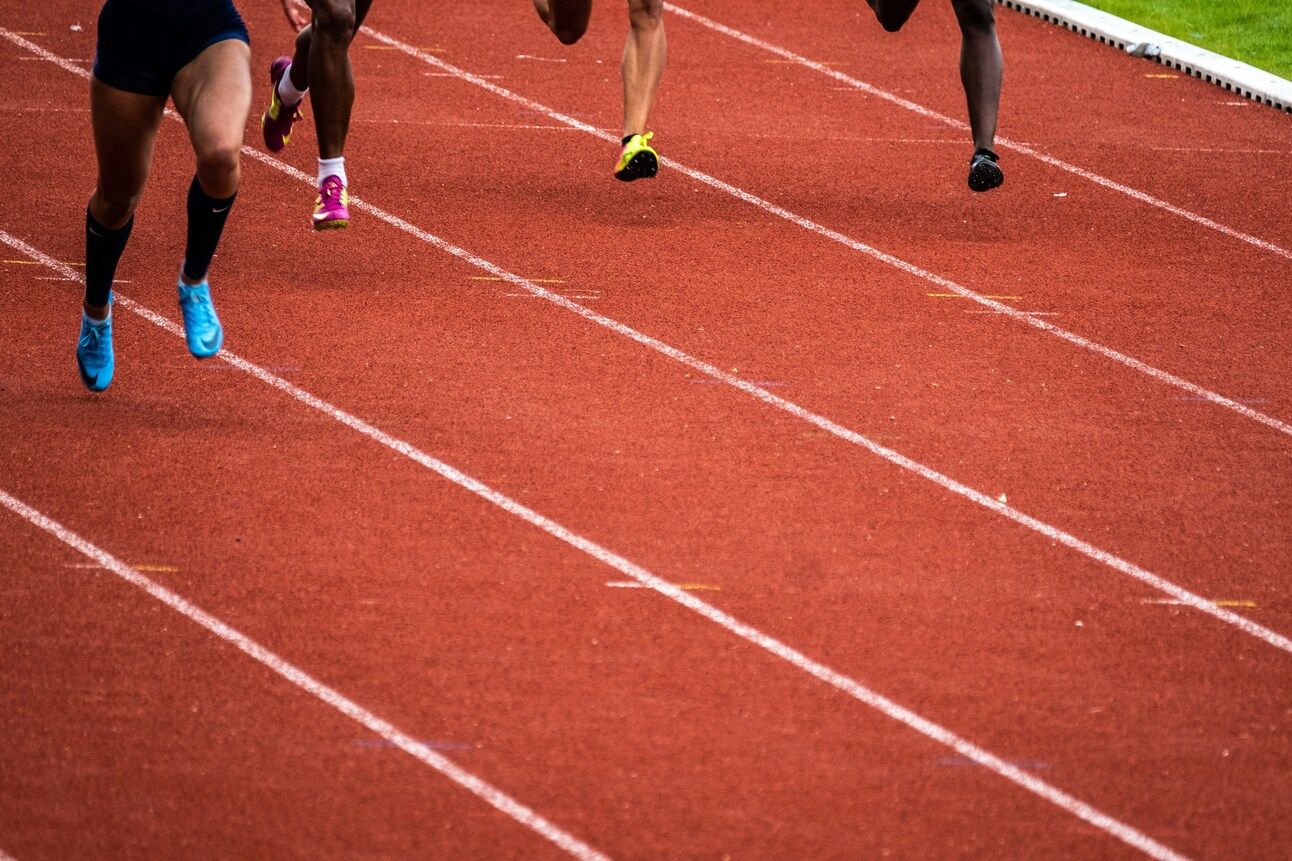- Made For Us
- Posts
- Beyond sight and sound: designing for the forgotten sense
Beyond sight and sound: designing for the forgotten sense
Plus: looking back on Season 2

Welcome back to the Made For Us newsletter. Thanks to everyone who tuned in to the podcast over the past few months and a warm welcome to our newest newsletter subscribers! Read on to learn more about two must-listen episodes from season 2 and an exciting awards update. If you’d like to read what someone else wrote about the show, check out this review of Made For Us in the Podstack newsletter.
Before we dive in, a reminder that you can catch up on any episodes you missed here and all transcripts are available here. If someone comes to mind while you’re reading this, please tell them about the podcast. You can also forward this newsletter and invite them to sign up.

Photo by Nicolas Hoizey on Unsplash
If you were one of the 2.5 million viewers who tuned in to watch the Paralympics in Paris last summer, you’ll have noticed the myriad adaptations for athletes with disabilities - the bells used for blind football and goalball, the cutting-edge running blades used by Para athletes, handbikes in cycling.
But perhaps the most simple assistive device is the short tether that joins blind or visually impaired runners to their guides.
The use of sighted guides is common for blind runners at both the amateur and elite levels. It means sight loss doesn’t have to be a barrier to participating in sport and they can keep out of harm’s way. But as some visually impaired athletes have found, being tethered to another human being also brings a unique set of challenges. Their fate is literally in another person’s hands.
A dream deferred
Spanish marathon runner Elena Congost got a painful reminder of this on the last day of the Paralympics. She was disqualified for letting go of the tether as she tried to help her guide, Mia Carol, who stumbled a few yards before the finish line. That split-second act of altruism cost Congost the bronze medal and $33,000 in prize money.
At the Paralympics, letting go of the tether before the end of the race is against the rules and runners can also be disqualified if the tether breaks.
Unfortunately, Congost’s experience is not an isolated one. In the documentary The Invisible Bond (which I’d highly recommend), French Para athlete Timothée Adolphe and his guide Jeffrey Lami recount how they fell just before crossing the finish line at the 400m final at the 2017 World Para Athletics Championship.
“It was very hard because he was so sad," said Lami, describing his teammate’s reaction to their disqualification. “He just cried.”
Navigation you can feel
But maybe there's a way to avoid such frustrations in the first place and to enable blind runners to be more independent.
Kevin Yoo, my guest in the penultimate episode of season 2, certainly thinks so. Yoo is the founder of Haptic, the company behind one of the world’s first touch-based navigation apps, the HapticNav. The app uses vibration, rather than visual or audio cues, to guide people to their destination and it can be paired with Haptic’s wearable device, the Wayband, for a hands, eyes and ears-free experience.
“In the future we want to make it so that blind runners can run alone on the tracks and they can show their full potential, not the potential of their guide,” Yoo said.
In our conversation, Yoo told me how he created Haptic to help solve the navigation challenges that blind and visually impaired people face, inspired by a friend who lost his sight after a car accident. That friend, Marcus Engel, is my guest in the season 2 finale.
I hope you enjoy listening to both episodes. In a world where design is predominantly for the eyes and ears, you’ll learn how designing for touch - probably our most overlooked sense - could lead to better technology for all of us.
Awards update
For the second year in a row, Made For Us was nominated for the International Women’s Podcast Awards and I’m thrilled to share that we took home the runner-up prize in the ‘Moment of Absolute Honesty’ category (for the first episode of season 2 with Lucy Edwards). You can check out the full list of IWPA winners and nominees (and discover some fantastic new podcasts) here.
Ballet Black’s new home campaign
The dance company Ballet Black, whose founder Cassa Pancho I interviewed in season 1, recently moved into a new space and are raising funds to build proper facilities for their dancers. They’re 79% of the way to meeting their target. Check out their JustGiving page if you’d like to learn more and donate.
Thanks for reading. If you’d like to share any feedback about season 2 or have ideas for future guests, I’d love to hear from you. Share your thoughts via this quick survey or simply reply to this email. If someone forwarded this to you, please sign up below.

